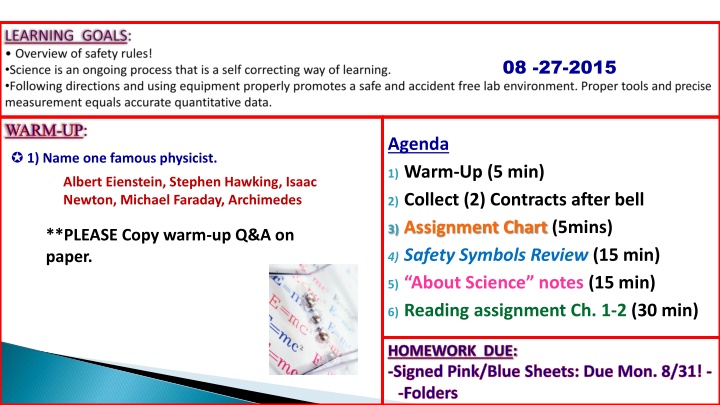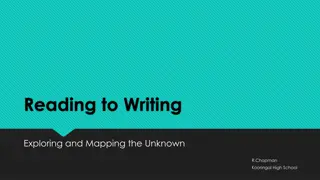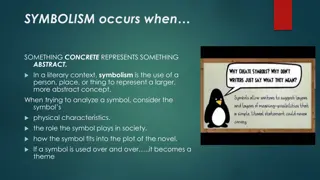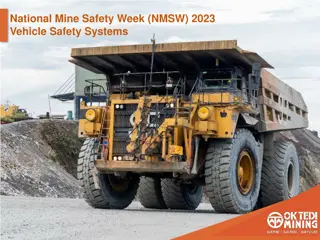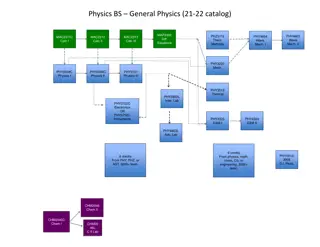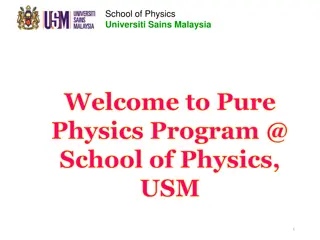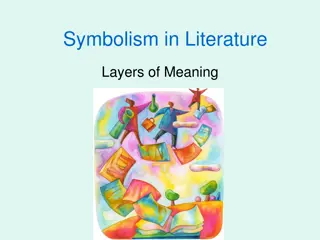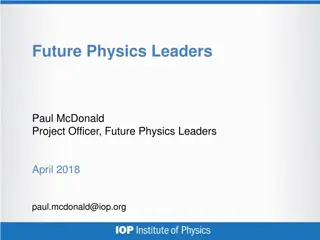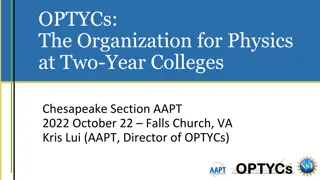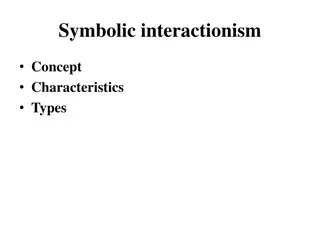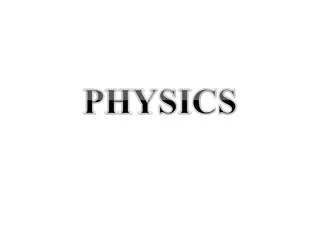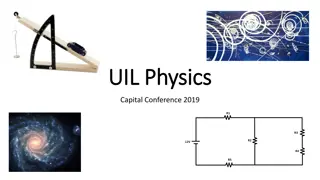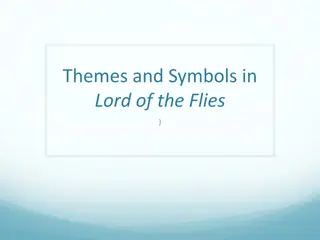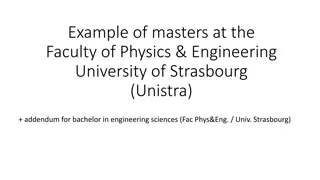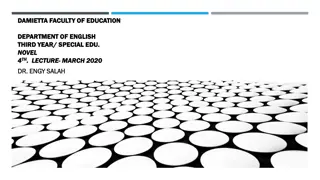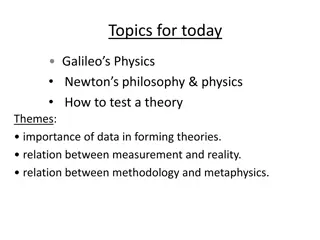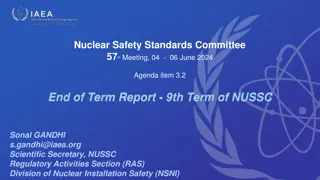Physics Agenda and Safety Symbols Review
"Engage with famous physicists, review safety symbols, explore science notes, and delve into reading assignments. Get ready for a Safety Quiz and discover the world of physical and life sciences foundation. Understand the significance of mathematics in science and the methods used in scientific inquiry. Develop problem-solving skills and hypotheses for experiments."
Download Presentation

Please find below an Image/Link to download the presentation.
The content on the website is provided AS IS for your information and personal use only. It may not be sold, licensed, or shared on other websites without obtaining consent from the author.If you encounter any issues during the download, it is possible that the publisher has removed the file from their server.
You are allowed to download the files provided on this website for personal or commercial use, subject to the condition that they are used lawfully. All files are the property of their respective owners.
The content on the website is provided AS IS for your information and personal use only. It may not be sold, licensed, or shared on other websites without obtaining consent from the author.
E N D
Presentation Transcript
08 -27-2015 WARM-UP: Agenda 1) Name one famous physicist. 1) Warm-Up (5 min) Albert Eienstein, Stephen Hawking, Isaac Newton, Michael Faraday, Archimedes 2) Collect (2) Contracts after bell 3) Assignment Chart (5mins) **PLEASE Copy warm-up Q&A on paper. 4) Safety Symbols Review (15 min) 5) About Science notes (15 min) 6) Reading assignment Ch. 1-2 (30 min) HOMEWORK DUE: -Signed Pink/Blue Sheets: Due Mon. 8/31! - -Folders
General Safety Breakage Heat Resistant Gloves Heating Electric Shock Open Flames Physical Safety
Safety Quiz Sept. 1 (A) Sept. 2 (B) 7 symbols
Unit 1: About Science
LIFE SCIENCES: PHYSICAL SCIENCES: I. II. Geology Astronomy Chemistry Physics Biology Zoology Botany
Physics (foundation for) Chemistry (foundation for ) Biology Physics (foundation for ) Chemistry (foundation for ) Biology
Mathematics universal language When information is expressed mathematically, it is easier to prove or disprove correctness
1. A red car is driving slowly; a blue car is driving quickly (slowly or quickly relative to what?) VS 2. A car is driving at 35 mph, and a blue car is driving at 110 mph (mathematical terms more clear)
Methods used in science in gaining, organizing and applying knowledge
Problem what question do you want answered? Hypothesis what do you THINK the answer might be? (an educated guess) The hypothesis must be TESTABLE (scientists must be able to experiment to test the hypothesis)
Atoms are the smallest particles of matter TESTABLE VS Albert Einstein is the greatest physicist of all time NOT TESTABLE
FACT a close agreement by competent observers of a series of observations of the same phenomenon (EX: water freezes at 0 degrees Celsius)
THEORY a synthesis of a large body of information that encompasses well- tested and verified hypotheses about certain aspects of the natural world Theories are based on facts. (EX: Theory of Relativity, Theory of Evolution)
LAWS or PRINCIPLES a general hypothesis or statement about the relationship of natural quantities that has been tested over and over again and has not been contradicted (EX: Newton s Laws of Motion)
Prediction what will happen if your hypothesis is correct? Experiment test your hypothesis Results visually show what you learned in your experiment (usually charts and graphs) Conclusion was your hypothesis correct? What did you learn from the experiment?
SCIENCE deals with theoretical questions; It is a way of knowing TECHNOLOGY deals with practical problems; it is a way of doing What do you think - Is technology good or bad?
All are pathways to search for order and meaning SCIENCE investigates natural phenomenon ART is the creation of objects or events that stimulate the senses RELIGIONis the belief in nature s purpose The 3 do not exist alone. The blending of all 3 creates diversity among scholars.
Vocab, Formulas, Notes Labs, Other
LINEAR MOTION READING ASSIGNMENT #1-18 *TURN IN TO BASKET WHEN COMPLETE*
DUE TODAY: About science notes (KEEP-Binder) Reading Assignment Ch. 1-2 (Turn-in) Courage is not the absence of fear, but rather the judgment that something else is more important than fear. -Ambrose Redmoon DUE NEXT CLASS: Study for Quiz! Syllabus & Safety Contract Binder/dividers/Calculator Unit FOLDERS (6)
Safety Objectives: 1.The student must understand the importance of safety in the laboratory as it relates to itself and those around them. 2.The student must be able to explain the meaning of common safety symbols used in specific scientific fields of study. 3.The student must demonstrate complete knowledge of laboratory safety rules. 4.The student must be able to demonstrate proper safety practices in the laboratory setting.
Chemistry Common to all Sciences Corrosive Apron Proper Disposal Heating Glassware Goggles Hand Washing Fumes Glassware General Safety Toxic/pois on Open Flames Heat-resistant gloves Electrical Shock No Open Flames Physical Safety Biology Sharp Objects Plant Safety Animal Safety
Apron- Wear a lab apron to protect skin and clothing. Goggles- Wear safety goggles to protect your eyes during labs that use chemicals, flames or heating, or the possibility of broken glass. Breakage- handle breakable materials with care. Do not handle broken glass. Heat-resistant gloves Use hand protection when handling hot materials. Do not touch hot materials with bare hands. Electrical Shock- Never use electrical equipment around water, or when equipment or hands are wet. Be sure cords are untangled and can t trip anyone. Disconnect equipment when not in use. No Open Flames- Flammable materials may be present. Make sure no flames, sparks, or exposed heat sources are present. Physical Safety- When an experiment involves physical activity, take precaution not to injure yourself or others. Alert your teacher of any reason that you should not participate in the activity.
Proper Disposal- Not everything goes in the trash or sink. Follow teacher s directions as to where to dispose of all materials. Hand Washing- Wash hands thoroughly after all lab activities. General Safety- Follow additional safety precautions given by your teacher. Toxic/poison- Do not let poisonous chemicals come in contact with your skin, clothing or eyes. Do not inhale vapors. Wash hands when you are done with the activity Open Flames- You will be working with open flames. Tie back loose hair and clothing. Follow teacher s instructions about lighting and extinguishing flames. Corrosive- Do not let chemicals come in contact with your skin, clothing or eyes. Do not inhale vapors. Wash hands when you are done with the activity Heating - Use a clamp or tongs to handle hot glassware. Do not pick up hot glassware with your hands. Fumes- Work in a well-ventilated area or the fume hood. Do not inhale directly. Use wafting if you are to test the odor of a vapor.
